Birds from the Rainforest: We live in a world that is home to some of the most complex and diverse ecosystems on the planet. Toucans and parrots are only two of the thousands of birds that live there. A temperate deciduous forest in North America has five to six times as many species of birds as a 220-acre stretch of rainforest in the tropics! The abundance of sunlight, freshwater, a stable climate, and year-round food availability make this possible. As well as being old and stable ecosystems, rain forests are also well-known.
We can see the result of millions of years of evolution in that place now. Aside from thriving, birds are essential to the health of these ecosystems. As pollinators and seed dispersers, fruit-eating birds safeguard the long-term viability of the plants they eat. On the other hand, insectivorous birds play a crucial role in keeping the population of invertebrates under control. Let’s take a closer glance at some of the fantastic birds that call the tropical rainforest home and learn more about their intricate web of interdependence, time, and climate.
Where do rainforest birds live?
These rainforest birds mainly live in the rainforests of Central and South America, Africa, Asia, Australia, and New Guinea. Rainforest birds that live in rainforest areas near humans are more likely to come closer to the rainforest floor. These rainforest birds eat from food sources on the rainforest floor.
Where do birds from the rainforest get their diets from?
Rainforest birds eat a wide variety of fruits and berries from many different rainforest trees. There are rainforest trees that produce fruits and berries all year round. Rainforest bird species eat these rainforest fruits to help them survive the dry season when rainforests have less rain.
A brilliantly colored Quetzal
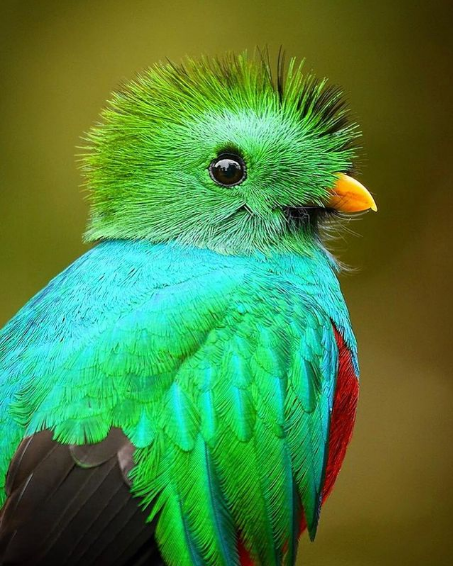
The Trogon family of bright fruit-eating birds includes the Resplendent Quetzal. Wild plants in the avocado family, which produce smaller fruits than the avocados we buy at the grocery store, are preferred food sources. The enormous pits of the fruits are regurgitated by the quetzal, which aids in their dispersal across the jungle. In the mountainous cloud forests of southern Mexico and western Panama, you can find this stunning bird. Spring growth, independence, and riches were all revered in ancient Mesoamerican cultures, where the quetzal was revered as a sacred bird. The quetzal, Guatemala’s currency, is named after the national bird of the country. The IUCN Red List classifies the Resplendent Quetzal as Near Threatened, and the species is in decline. The greatest danger to this eponymous bird is the destruction of its cloud forest habitat.
Araçari with Curls-Birds from the Rainforest
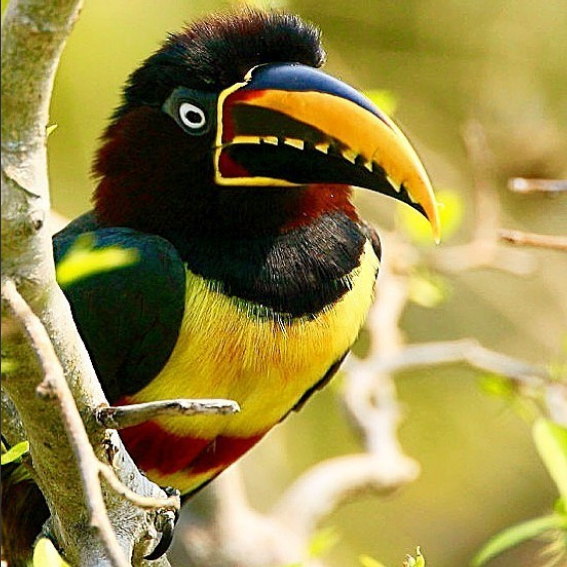
In the Curl-Crossed A member of the Ramphastidae family, better known as toucans, Araçari can be found in Brazil. You can see toucans from southern Mexico to South America. The Araçari may be the most fashionable toucan in a family famed for its vibrant hues, thanks to its perm-like bright head feathers. Western Amazonia in Peru, Brazil, and Bolivia includes lowland and foothill rainforest habitats, where you can find this beautiful bird. The Araçari, like most toucans, eats a significant portion of its food in fruit.
Sun Parakeet-Bird of the Sun
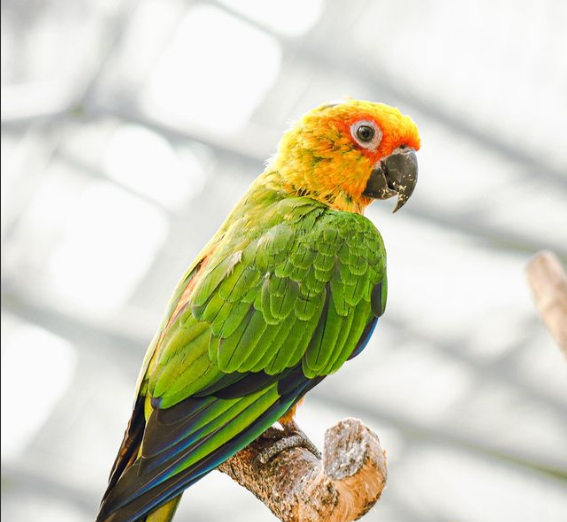
As its name suggests, the Sun Parakeet is a gold-colored parrot with an orange flush on its head and face, which makes it look like the rising sun. Large tracts of undisturbed forest in northern Brazil and Guyana are the only known habitats for this invasive insect. Even though the species could formerly gather as many as 200 individuals into big flocks, a recent study estimates that the species’ wild population is currently down to as low as 2,500 individuals. The primary threat to the Sun Parakeet is capturing for the pet bird trade, even though habitat degradation plays a role. According to a recent study, more than 100,000 parakeets were taken from the wild each year in the 1990s to be marketed as pets. As a result, locating one of these adorable birds in the wild is becoming increasingly difficult.
Eagle Harpy-Birds from the Rainforest
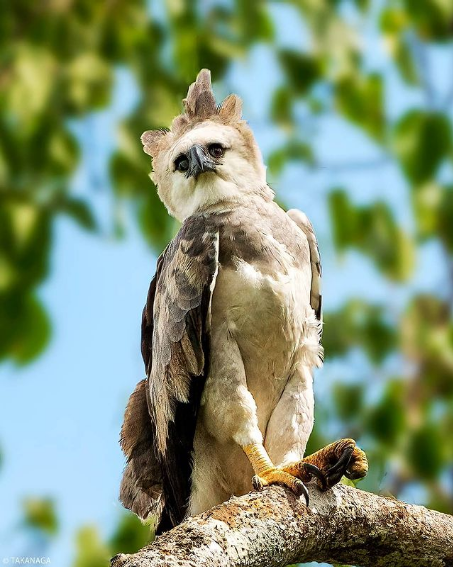
The Harpy Eagle, a prominent and fearsome predator, genuinely resembles a bird of myth and fantasy. Fawkes, the Phoenix from the Harry Potter novels is based on it. The Harpy Eagle has a wingspan of roughly seven feet and a maximum length of three and a half feet. There have been reports of this large bird of prey taking down macaques (including macaws) and curassows, which can reach the size of a hen turkey, in addition to medium-sized mammals. The harpy eagle was previously widespread throughout Mexico, Central America, and South America, but it is now extinct. There are currently less than 50,000 people in the world.
Screams of Piha
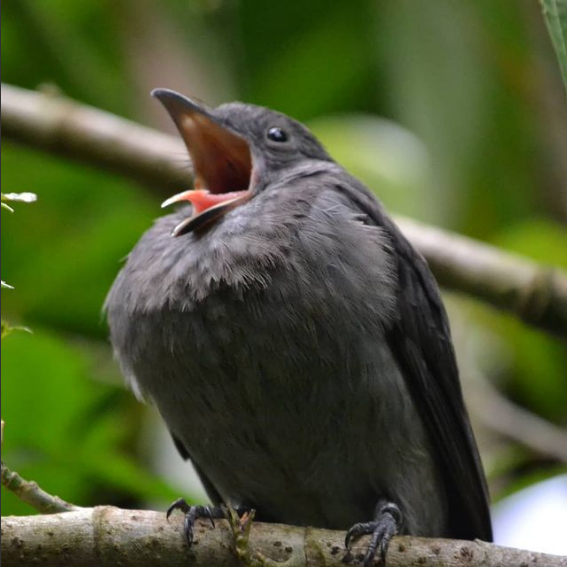
Although the Screaming Piha has a simple appearance, please don’t underestimate the power of its song. What begins as a soft whistle quickly develops into a full-on warning that you can hear 1,300 feet away, which is equivalent to four football fields worth of distance. The unusual sound of this bird’s call has been featured in the soundtracks of numerous rainforest-themed films. During the day, male Piha spend much of their time calling, and they do so together: Each Piha in the immediate vicinity has its moment in the spotlight. On a peaceful afternoon, a loud noise may set off a wave of Piha sounds that lasted for miles. Lowland forests in Amazonia are a widespread habitat for this raucous bird. Wild figs and insects are staples in the diet of the Screaming Piha. Concerns for Nature Conservation
The hyacinth macaw-Birds from the Rainforest
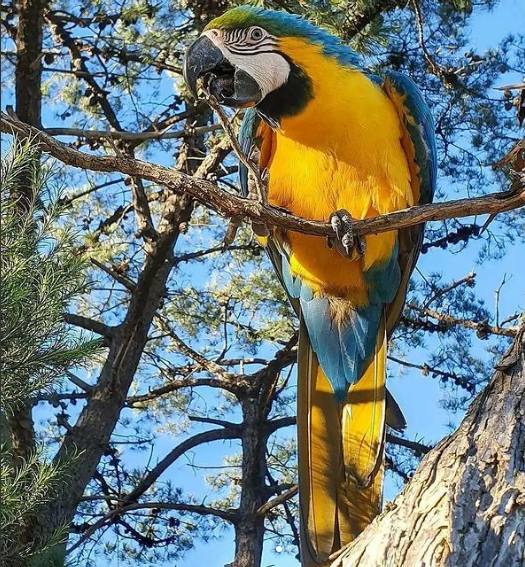
The hyacinth macaw is one of Brazil’s most beautiful birds. The world’s longest parrot, the hyacinth macaw, is one of the most beautiful Amazon birds. From 4 to 5 feet in length, it has a wingspan (130 to 150 cm). With their bare yellow eye-ring and a yellow patch of skin on the side of their lower beak, this beautiful bird stands out. Irises and feet are both a dark grey, as is the pattern on its back. However, girls tend to be a little slimmer than their male counterparts. The top bill is lighter, and the tail is shorter in juveniles.
A toucan called Toco toucan-Birds from the Rainforest
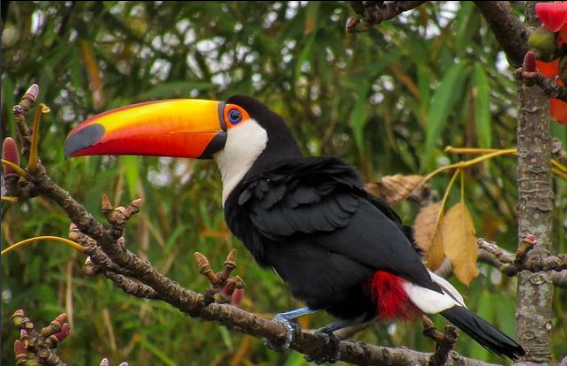
The biggest toucan in the world is the Toco. As the most prominent and best-known toucan, the toco measures between 1.8 and 2 feet (55 and 65 centimeters) in length from head to tail. It has a distinctive plumage with a primarily black body, white neck, breast, and upper tail-coverts (and red under tail-coverts).
It has a blue ring around its eyes as if it had an iris of the same color. Another ring of exposed orange skin surrounds this blue skin. However, the most striking aspect of this bird is its enormous bill, which may measure up to 9 inches (23 cm) in length and is yellow-orange with a black base and a massive spot at the tip. Despite its appearance, its bill is relatively light in weight because it is largely hollow on the inside. The bill is nearly as long as the highly flat tongue. The male and female seem the same, although youngsters are darker and shorter-billed than adults.
Macaws, blue and yellow
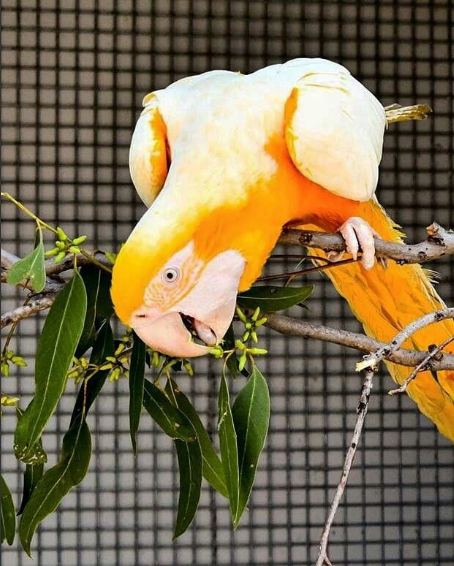
The blue and yellow macaw is one of the Amazon Rainforest’s most beautiful birds. Named for its striking blue back and dark lemon-yellow breast, the blue-and-yellow macaw is a stunning bird. Black is the dominant color of its beak, which features a feathery black “beard” at the base. Crown in green color When this macaw becomes aroused, it blushes pink because it lacks feathers on half of its face. In the wild, this macaw forms close-knit groups. In the wild, flocks of these birds gather to play, bathe, and forage for food in the woods, all in the company of their fellow members.
The scarlet macaw-Birds from the Rainforest
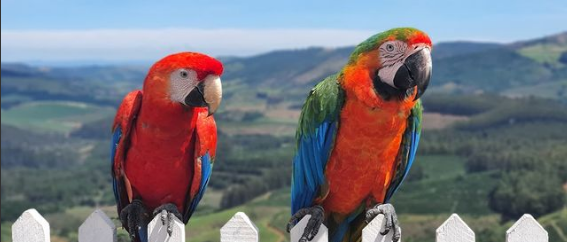
The scarlet macaw is the most prominent Amazon parrot with a wingspan of 2.6 feet (81 centimeters). This bird’s coloring is mostly scarlet with vivid blue feathers on the tail, rump, and wings. They have yellow upper wing coverts and dark blue flight feathers, and the tips of their tail feathers are also dark blue. White skin is shown around the eyes and beak of this Amazonian bird. While their top beaks are usually white, their bottom ones are black. It’s the same for men, females, and juveniles; only the eyes are different.
Orange-eyed owl
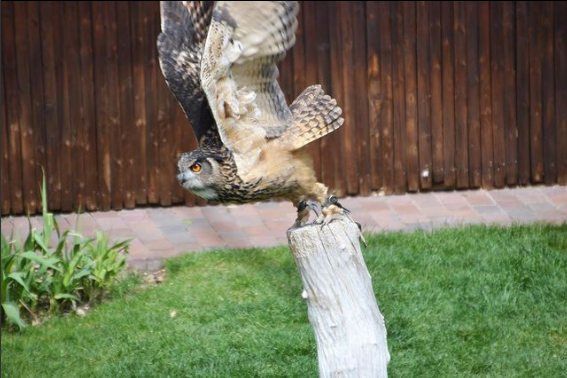
A giant tropical owl, the spectacled owl, is a spectacled owl in size. Most of its range has blackish-brown upperparts with white face markings and whitish to yellow-ochre underparts, identifiable in most of its range. The beak is pale, and the eyes are yellow. The juvenile is much more striking than the adult, with a snow-white body and a chocolate brown face disc. It is the only known owl species to live year-round in the Amazonian jungles.
Hoatzin-Birds from the Rainforest
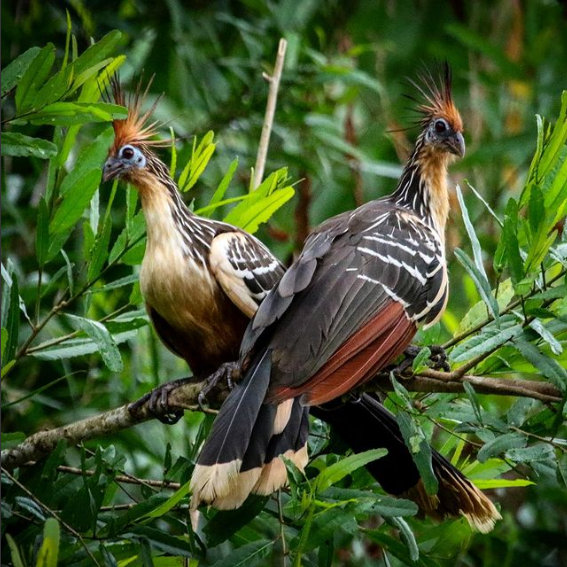
Hoatzin is a Neotropical Amazonian bird found primarily on the Orinoco basins of South America. It prefers mangroves, lakes, swamps, and other riverine habitats. A poor flyer, is known to ascend from tree to tree and may remain in one spot for extended periods unless disturbed by a loud noise. On top of all that, it moves awkwardly along the foliage. Chick claws adorn its wing digits. They are herbivores (folivores) and eat primarily leaves from the plants that grow in their natural habitats.
Stork Jabiru
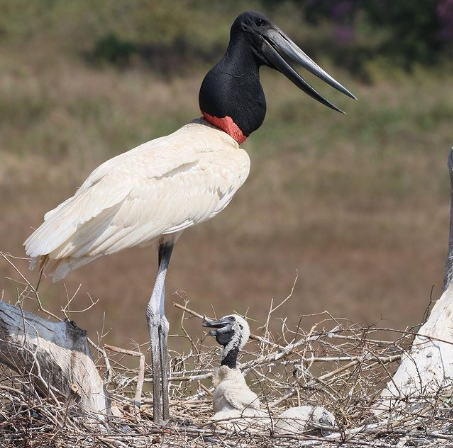
Known as one of the giant American flying birds, the Jabiru is a tall, long-necked wading bird. It may grow up to 4.5 feet long and lives mainly in Brazil’s wetland regions. Fish, amphibians, reptiles, insects, and small mammals are the primary food sources for Jabiru.
At this time of year, they eat dead fish and carrion. When on the prowl for prey, the Jabiru is a sluggish hunter. These birds fly slowly with an 8-foot wingspan and a lazy flapping technique (approximately 180 flaps per minute).
Birds from the Rainforest
According to the International Union for Conservation of Nature’s Red List of Threatened Species, many tropical rainforest birds are critically endangered or endangered. Many of these tropical birds are on the verge of extinction due to habitat loss and fragmentation. An area more extensive than Massachusetts and Rhode Island is lost to deforestation every year in the Americas. Another future concern is exacerbated by deforestation: climate change.
Findings from new research show that even in well-protected forests, population losses are being driven by drying and hotter weather. In addition to affecting bird reproduction, the changing climate also harms bird habitat loss. The illicit pet trade poses a threat to many tropical birds in the Americas as well. In the case of the Sun Parakeet, this behavior can have a devastating effect on bird numbers. Researchers do not yet know the full scope of illegal trade in South America, in part because of the difficulties in gathering data. Still, they expect it to grow in the future years due to rising international demand. Efforts to Conserve Resources
Conclusion
Conservation efforts are underway in Central and South America and the Caribbean to conserve crucial bird habitats. We have established 93 nature reserves in partnership with local partners, many of which house threatened birds. Serra Bonita, a Brazilian Atlantic Forest reserve, is one example of this type of facility. After a long absence, the mighty raptors have returned to the reserve in recent years after losing this type of forest. ABC also places a high priority on habitat rehabilitation. Currently, we have planted over 6 million trees and shrubs in 15 countries with the help of our partner organizations.
Trees are being planted in tropical rainforests by ABC as part of a more considerable effort to increase the number of trees globally. The significance of these initiatives goes far beyond the borders of the forest. Approximately 1 billion tonnes of carbon dioxide are absorbed by intact rainforests worldwide each year, which is critical to reducing climate change. These habitats must be preserved and maintained for the benefit of birds and other animals and the health of the planet. Donate to ABC’s conservation efforts, which include saving and managing tropical rainforests. Please consider doing so.
Recommended Reads
- Blue Heron Bird Eats Entire Alligator On Video
- Rain Forest of Australia
- Cute Animals in Australia-Top 16
- 5 Unorthodox Activities to Try While Traveling
- Airbnb in Negril Jamaica 2021-Top 10 Affordable

